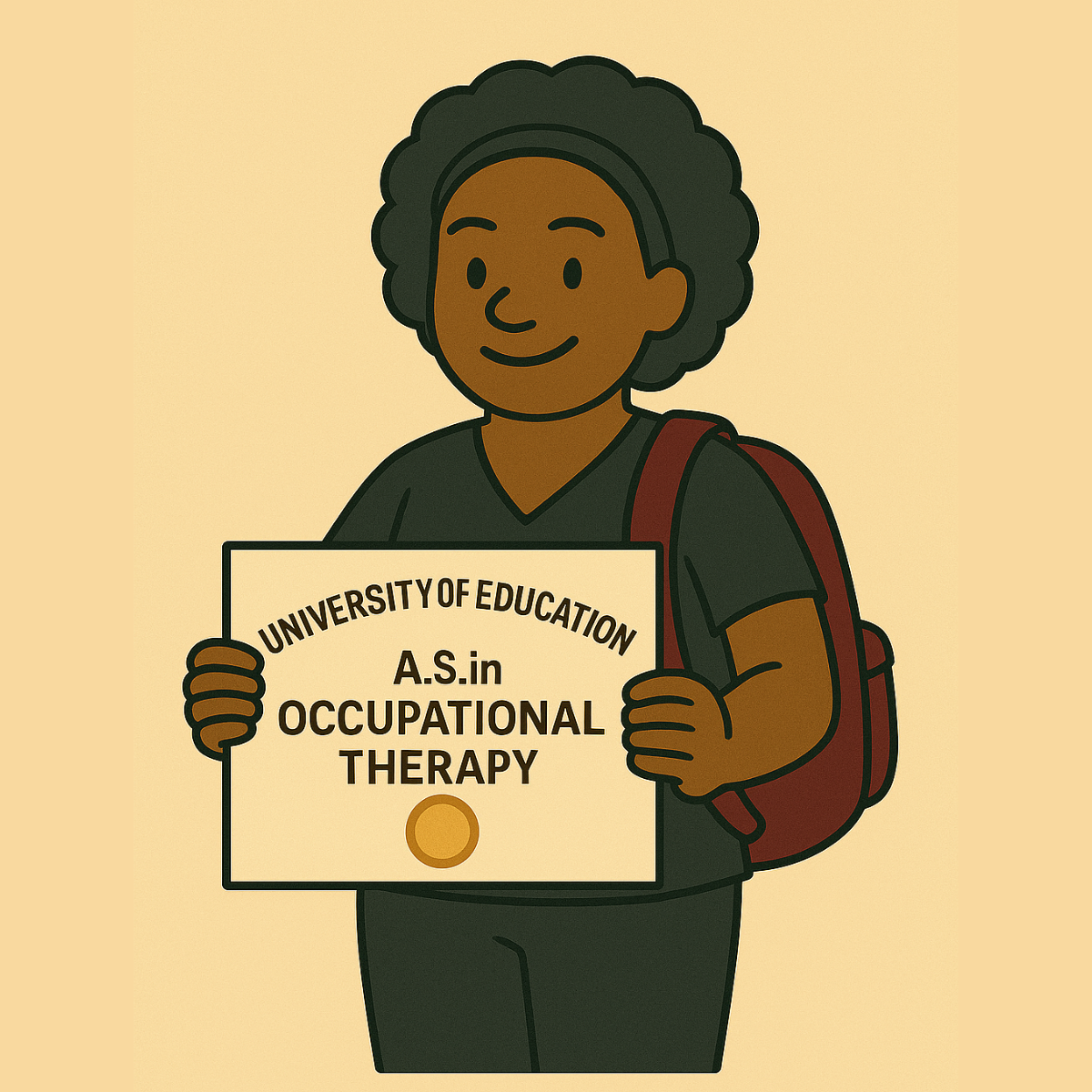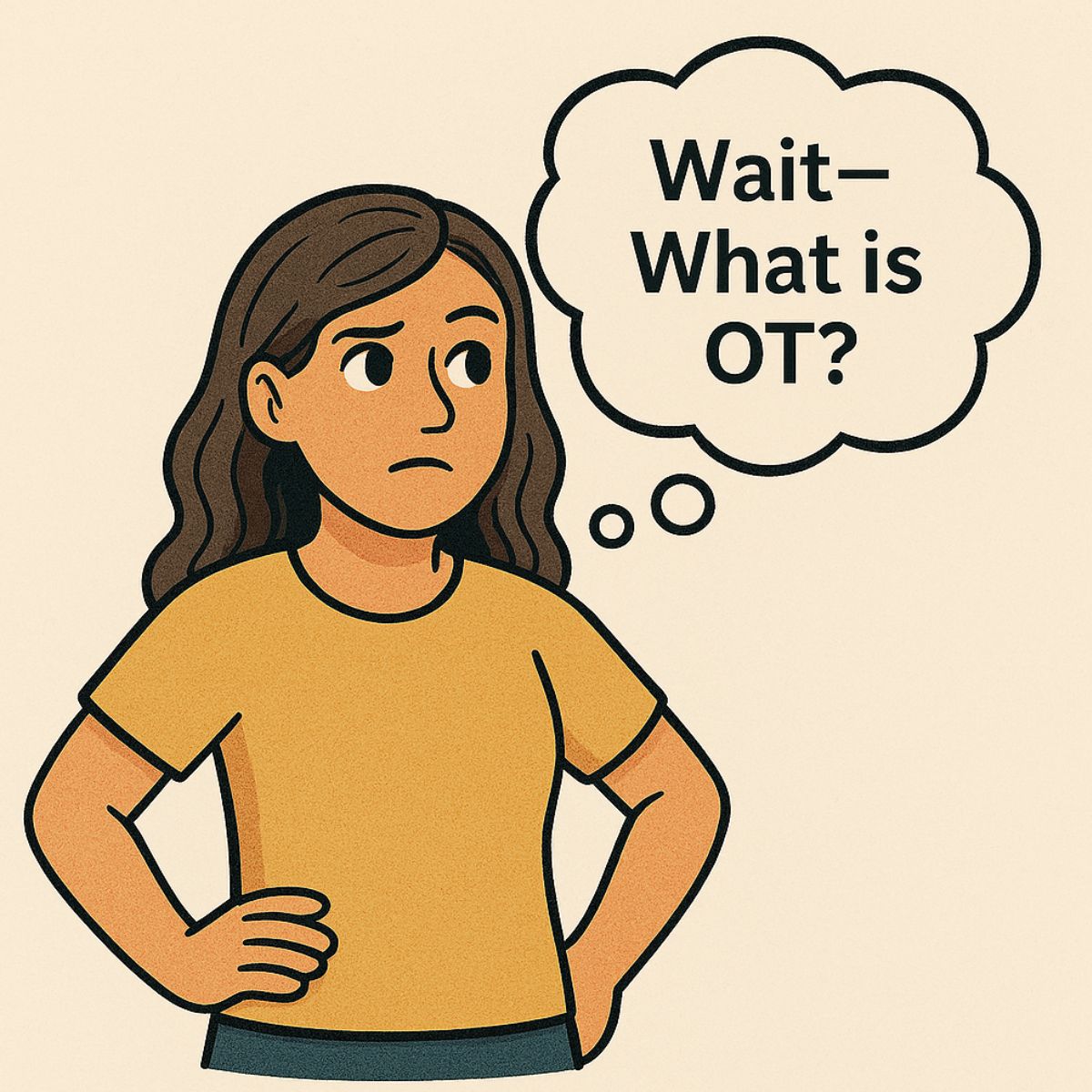8-minute read
Let’s get technical here—your first job as an OT or OTA is likely your fieldwork, which (surprise!) is typically unpaid. But whether you’re gearing up for fieldwork or just signed your first contract as a new grad, one thing’s for sure: having the right tools makes all the difference.
This guide cuts through the clutter and gives you the actual must-haves—whether you’re stuffing your first rolling tote or looking for a thoughtful OT Month gift or starter kit. And although this list is focused on the occupational therapy fieldwork experience, physical therapists and students may find many of these tools equally helpful.
Heads up! This post may include affiliate links, which means I might earn a small commission (at no extra cost to you) if you decide to make a purchase. I only share things I truly find helpful—thanks for supporting the blog!
10 Amazon Must-Haves for New Grad Occupational Therapists
Each item listed is practical, therapist-approved, and ready to support your success from your very first day.
1. OT Pocket Reference Guide

A quick-access, pocket-sized tool packed with evaluations, precautions, treatment ideas, and documentation tips.
Why it’s a must: You’ll want this for those moments you blank on standard assessments or need a CPT code on the fly. Whether you’re a fieldwork student or full-time therapist, the right reference saves time, improves accuracy, and boosts your confidence when charting or brainstorming interventions.
Recommended resource: Our very own OT Pocket Guide—created by a working therapist, designed specifically to support you during evaluations, interventions, and documentation. It’s like a clinical cheat sheet in your pocket—and it’s already helping therapists nationwide.
Suggestion: Productive Rehab Therapist Pocket Guide for Occupational Therapy
2. Gait Belt with Metal Buckle

This is a non-negotiable in nearly every adult-based setting.
Why it’s a must: You’ll need it for transfers, bed mobility, and any functional mobility training session. But more importantly—it’s essential for safety and liability protection. If a patient were to fall under your watch, a facility or supervisor will always ask: “Were you using a gait belt?” Having one is often the make-or-break factor in preventing injury (or lawsuit).
Suggestion: Secure Transfer Gait Belt with Metal Buckle
3. Comfortable, Slip-Resistant Footwear

Forget fashion—go for comfort and traction.
Why it’s a must: You’re on your feet all day, often lifting, guarding, and demonstrating movement techniques. And let’s face it—spilled drinks, recently mopped floors, or slick surfaces are very real hazards. Slip-resistant shoes help you stay upright and avoid workplace injuries, all while keeping you supported through 8+ hour shifts.
One of my personal favorites? Slip-on, slip-resistant Skechers—easy to wear, supportive, and perfect for busy therapy days. I highly recommend giving them a try.
Suggestion: Skechers Work Slip-On Slip-Resistant Shoes
HOKA Bondi SR or Dansko Professional Clogs for more options.
4. Rolling Therapy Tote or Backpack

A game-changer for students and therapists on the move.
Why it’s a must: Keeps your hands free while organizing everything from paperwork to sensory tools. Neatness matters—especially when you’re traveling between clinics, schools, or homes. A good rolling tote or therapist backpack helps you look prepared, professional, and efficient.
Suggestion: Rolling Utility Tote or Therapist Laptop Backpack
5. Blood Pressure Device (Wrist or Arm Cuff)

Because vital signs aren’t optional.
Why it’s a must: Blood pressure monitoring is essential during evaluations, ADL assessments, and documenting status changes. It’s smart to have your own, even if your facility supplies one—especially in busy settings where equipment isn’t always readily available.
Whether you go the traditional route with a manual cuff and stethoscope, prefer the accuracy of an upper arm digital monitor, or need the convenience of a wrist cuff, having your own device ensures you’re always prepared.
Suggestions:
- Omron Upper Arm Blood Pressure Monitor – for reliable, accurate readings.
- Omron 7 Series Wrist Blood Pressure Monitor – compact and easy for quick checks.
- Paramed Manual Blood Pressure Cuff with Stethoscope – classic and cost-effective for those trained in manual readings.
6. Pulse Oximeter + Stopwatch Combo

Two-in-one tools are fieldwork gold.
Why it’s a must: You’ll use a pulse ox to monitor oxygen levels, especially with patients on O2 or those with respiratory issues. It’s also great for pursed lip breathing education and activity tolerance tracking. Pair it with a stopwatch to time walking tests, exercises, or ADLs—and you’ve got a power combo for cardiopulmonary care.
Suggestion: Zacurate Pulse Oximeter + Stopwatch Combo
7. Scrubs with Stretch & Pockets

Comfort and function in one.
Why it’s a must: Scrubs are basically professional pajamas—but finding the right fit with stretch and pockets will take you far. They should move with you through lifts, squats, kneels, and transitions, all while keeping you looking clean and put-together. Choose quality over quantity here!
Suggestion: Figs Scrubs or Cherokee Workwear Stretch Scrubs
8. HIPAA-Compliant Clipboard

It’s more than just a writing surface—it’s privacy protection on the go.
Why it’s a must: Store paperwork, pens, and small tools while keeping sensitive client information secure. It doubles as a mobile workstation—keep your schedule, eval templates, SOAP note prompts, or quick references inside. It also shows patients and staff that you’re organized and professional from day one.
Suggestion: Saunders HIPAA Privacy Clipboard (aluminum) or Sooez HIPPA Privacy Clipboard (plastic)
9. Mini Dry-Erase Board with Markers

The underrated therapy essential.
Why it’s a must: Useful for visual schedules, multi-step instructions, and especially helpful with patients who are hard of hearing, non-verbal, or just need a visual cue to stay on task. It’s also more eco-friendly than paper handouts and comes in clutch when you’re doing group therapy or redirecting cognitively impaired clients.
Suggestion: 8.5×11 Magnetic Dry Erase Board
10. Durable Goniometer Set

If you’re in outpatient, ortho, or rehab, this is a must.
Why it’s a must: Accurate range of motion (ROM) measurements are a staple in OT practice—from baseline assessments to progress notes and discharge planning. Having your own set means you’re never scrambling to borrow, and it’s a great tool to lend to a coworker—just make sure they give it back!
I recommend the ASA TECHMED Goniometer Complete Set—it includes 6 pieces plus a body measuring tape, with protractors in various sizes (12″, 8″, 6″) for flexibility in different clinical situations.
Suggestion: ASA TECHMED Goniometer Complete Set
Conclusion: Tools Make the Therapist
You’re stepping into a hands-on career where preparedness meets compassion. Whether you’re filling your backpack for fieldwork or prepping for your first full-time gig, having the right occupational therapy tools will elevate your practice and ease your learning curve.
Don’t forget to grab our free quick reference sheets—built for busy therapists like you.
And there’s more on the way—our Speech Therapy Pocket Guide drops in May, and the PT Pocket Guide is set for October, just in time for PT Month. Stay tuned for more quick-reference tools designed to support you across every stage of your therapy journey.
Download Your Free Quick Reference Sheets








